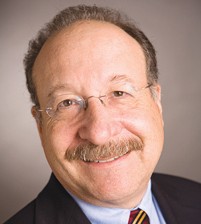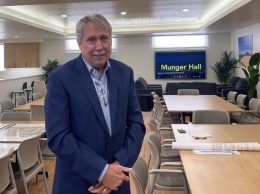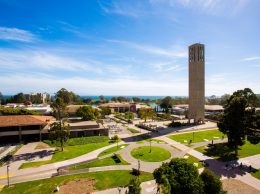Dubroff: 10 things you never knew about the region’s Nobel Prize winners
IN THIS ARTICLE
- Columns Topic
- Henry Dubroff Author
By Henry Dubroff Friday, October 10th, 2014

Henry Dubroff
You can spot them in a tux at formal dinners or in casual attire on a plane to Denver or LAX. Occasionally you find them on a pre-Christmas shopping expedition to State Street.
Sometimes they even give a private chat for an area nonprofit and, you might even exchange emails with one of them.
The six Nobel Prize winners currently at UC Santa Barbara are not always holed up in their labs or offices working on research. They do step out in public — even if ever so briefly.
And since I’ve been around for five of the six Nobel announcements — I missed Walter Kohn (1998, chemistry) by a year — I’ve observed the behavior of this rare group of individuals.
The announcement overnight on Oct.6 that Shuji Nakamura had become the latest of our winners gave me a chance to think about a series of brief encounters over the years.
1. Style matters. Kohn’s signature accessory is a beret that neatly covers his head. Iowa native Alan Heeger (2000, physics) is the Johnny Cash of the Nobel set. He likes to dress all in black and wears two rings — one for his wife and one for science.
2. Patience really, really pays off. Heeger told a United Way group in 2013 about how he waited 24 years for his Nobel Prize after an interdisciplinary breakthrough created the plastic transistors that drive today’s Samsung phone displays. Finn Kydland (2004, economics) did his landmark research with former colleague Ed Prescott in 1977.
3. This is a very active group. The last time I saw Kohn he was consulting with governments in Eastern Europe about energy efficiency projects. Heeger has backed a couple of Broadway plays, including “In the Heights” and the revival of “West Side Story.” Herb Kroemer has mentored a number of area entrepreneurs.
4. Some of their ideas are worth a trillion. Economist Kydland’s research suggested that governments do a poor job when they try to time big policy changes to business cycles. The native Norwegian’s work influenced his home country’s sovereign wealth fund, also known as the “oil fund,” which sticks to spending a fixed percentage in good times and bad. Its assets are now $900 billion and Norwegians are the wealthiest people in the world.
5. Even Nobel Prize winners can miss an opportunity. Short-listed for more than two a decades, Heeger sold his pioneering thin film company Uniax to Dupont just a few months before he won his Nobel Prize. The price would have been substantially higher had he waited, one suspects.
6. You never know where the Nobel Prize winners’ ideas are going to pop up. Heeger has evolved his thin film ideas into an advanced concept for solar panels. The Jerry Brown “rainy day fund” ballot initiative to smooth out wild revenue swings in California’s budget draws indirectly on Kydland and Prescott’s research.
7. Behind many winners is a proud donor. The late Fred Kavli funded UCSB’s Theoretical Physics Institute, where Kohn was founding director and which is now headed by David J. Gross (2004, physics). Jeff Henley, vice chairman of software firm Oracle Corp., funded both the Henley Professorship in Economics now occupied by Kydland as well as the solid state lighting center, which Nakamura co-directs.
8. It’s lonely at the top and UCSB likes it that way. There are only three major research universities — UCSB, Princeton and CalTech — that don’t have a law school, business school or medical school. That makes our Nobel Prize winners extra special and puts a gleam in the eye of Chancellor Henry Yang.
9. Think Yankees vs. Dodgers or Giants vs. Dodgers. The high-end competition for attracting Nobel Prize winners is between three universities: Stanford, Columbia and UCSB. Columbia and Stanford have more money and the obligatory professional schools but UCSB holds its own.
10. We are not done yet. Among those short-listed is Galen Stucky, a UCSB professor of materials.









